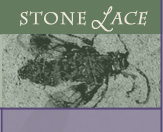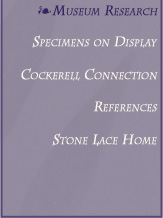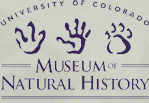|
Research by Dr. Dena Smith, Curator of Invertebrate Paleontology, CU Museum
Have insect feeding strategies and plant defensive strategies undergone dramatic change over time? I am examining insect damage on fossil leaves from Florissant, Colorado (Eocene) and comparing my findings to insect damage found in modern tropical and temperate forests.
To study insect damage at Florissant, I collected over 600 fossil leaves. Insect feeding is measured by the total number of leaves damaged in the sample and the total leaf area that was removed by insects. I also check each fossil leaf for evidence of specialized insect damage. This kind of damage is very distinct and can often be identified to specific types of insects.
Levels of insect damage at Florissant (23% of leaves damaged in the fossil sample) appears to be lower than levels found in modern floras (72-90% of leaves damaged in a forest sample). The leaf area removed by insect herbivores also appears to be lower in the Florissant assemblage (2%) than in modern floras (6.3-48% area removed in tropical forests and 7-13% in temperate forests). I also found evidence of specialized plant-insect associations that were maintained throughout the Eocene and evidence of fossil associations that are still in existence today. One example is found on a Cercis leaf - Redbud Tree (see image at right). This damage, called galling, was probably made by a type of aphid and is an association that is still in existence today.
Florissant gives us an opportunity to see how insect-plant interactions have changed over time. Lower levels of insect feeding in the past may reflect the climatic instability that was occurring during Eocene. The evidence of specialist feeders at Florissant shows that associations between plants and insects existed at this time and that those associations were maintained despite the effects of frequent climatic perturbations. We are now working to compare Florissant to other fossil sites in the western US.
Return to the Museum Research page.
|






